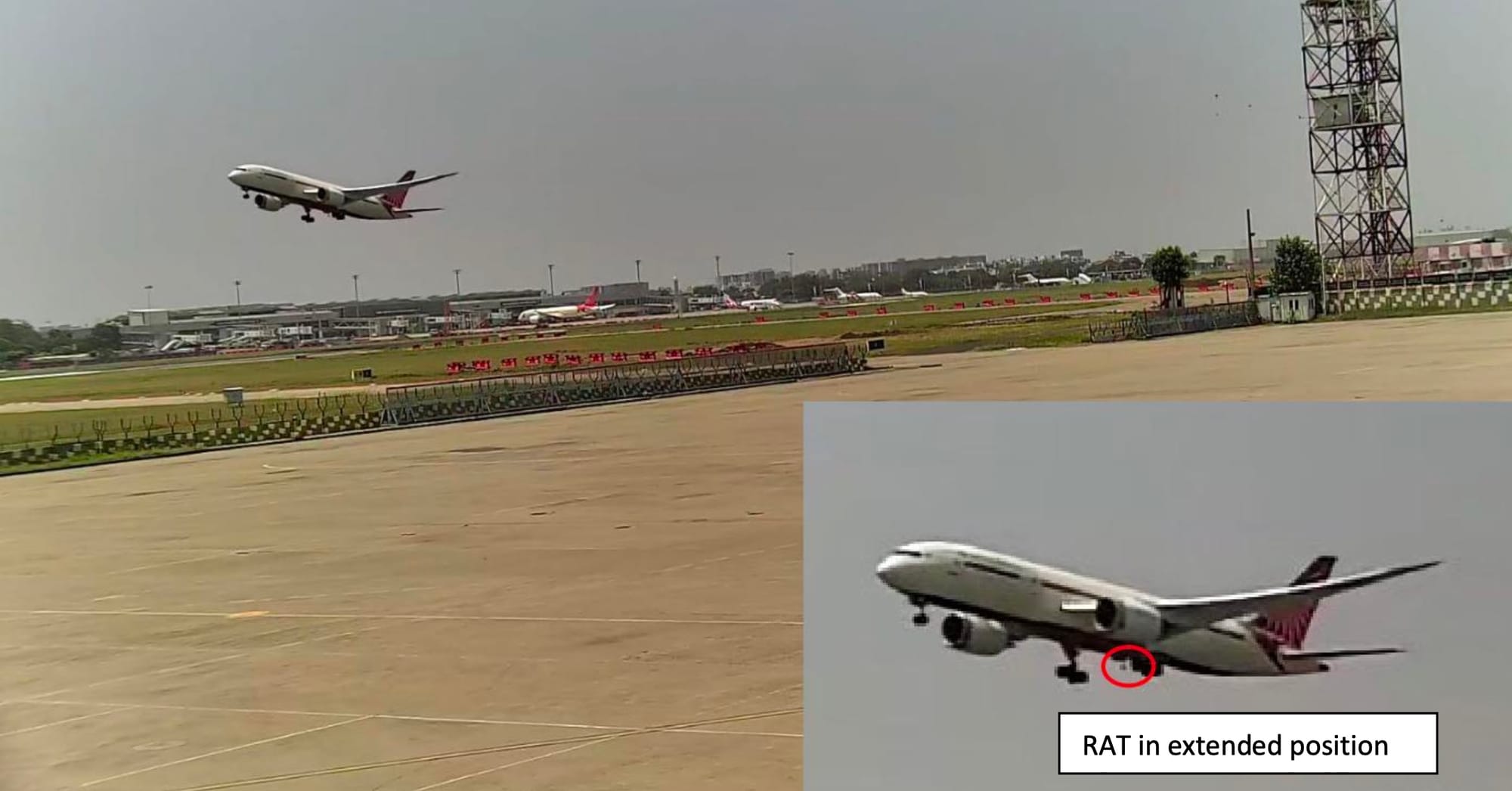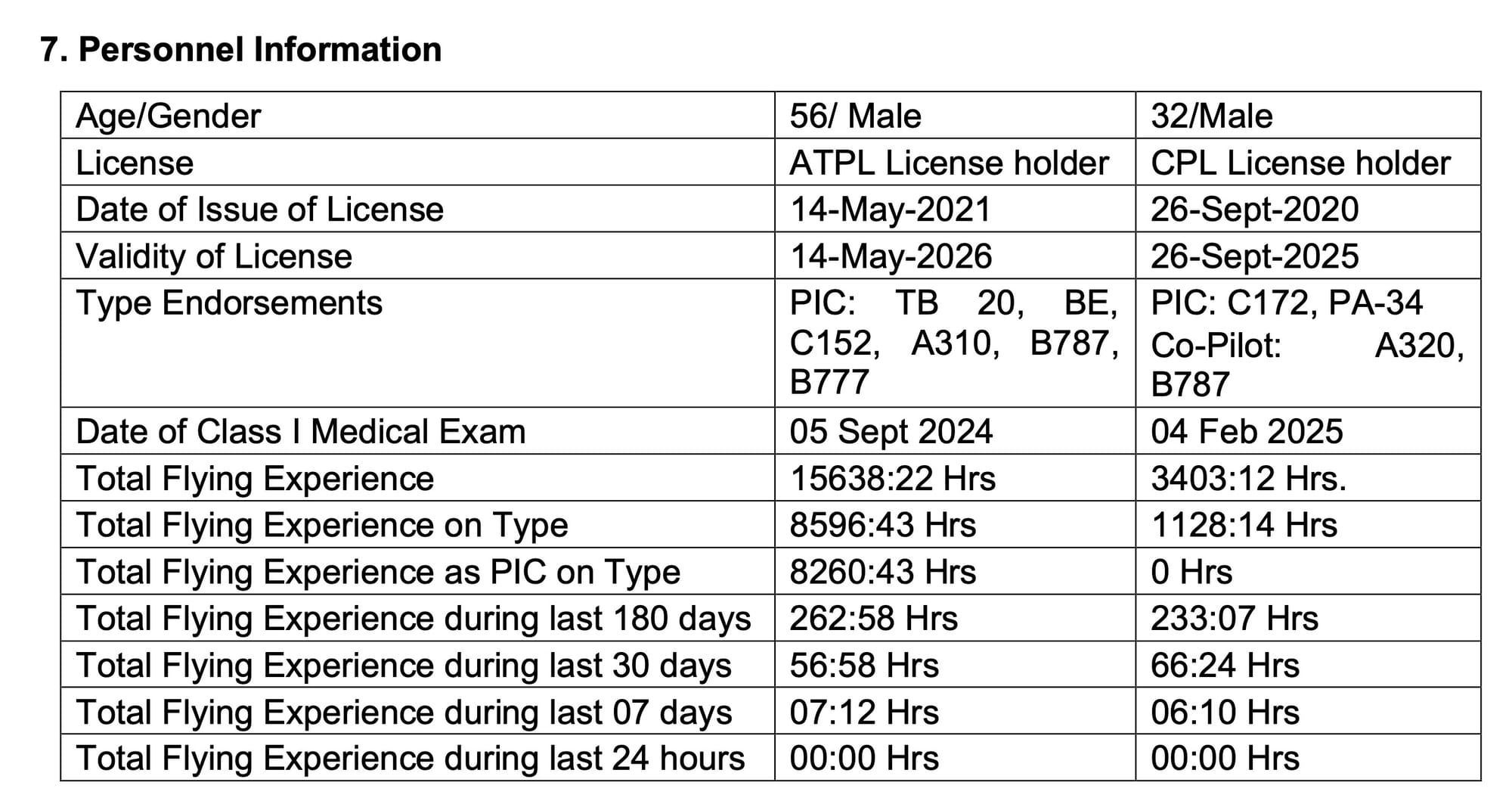The Air India Crash Report
The interim Air India VT-ANB crash report is out, and it's deceptively simple. How the plane crashed seems simple, both engines were cut mid-climb, dooming everyone to die. But why? This we may never know. But here's what we know at this point, via the report itself and some experts online.
How

You can turn off the ignition on a moving plane as well as a car. Both facts are new to me, but this is verified. Why is this even possible in any vehicle? The general principle is that man should control the machine, ie kill the engine if the engine is on fire. In a car you can turn the whole thing off even at highway speeds (I've never tested this), and it keeps just enough steering and brake power to navigate. In the same way, you can kill the power to even both engines on a plane, and the Ram Air Turbine (RAT) and Auxiliary Power Unit (APU) will give enough power to operate.
The difference is that a car can glide to a halt on the ground, whereas a plane must have enough vertical space (literal ‘high’ way) to either restart an engine or land safely. Also a plane, unlike a car, has two engines, and two pilots to operate. Both engines being shut down and one pilot acting without the other is the edgiest of edge cases. Yet that's what seems to have happened in this case.
You should read the interim report yourself, it's just 15 pages, and for expert interpretation I'd recommend Mentour Pilot. The most relevant 30 seconds were this. That's all it really took, they were gone in 30 seconds.
The aircraft achieved the maximum recorded airspeed of 180 Knots IAS at about 08:08:42 UTC and immediately thereafter, the Engine 1 and Engine 2 fuel cutoff switches transitioned from RUN to CUTOFF position one after another with a time gap of 01 sec. The Engine N1 and N2 began to decrease from their take-off values as the fuel supply to the engines was cut off.
In the cockpit voice recording, one of the pilots is heard asking the other why did he cutoff. The other pilot responded that he did not do so.
08:08:52 —Engine 1 fuel cutoff switch transitioned from CUTOFF to RUN
08:08:54 — APU [Auxiliary Power Unit] Inlet Door began opening
08:08:56 — Engine 2 fuel cutoff switch also transitions from CUTOFF to RUN
The EGT was observed to be rising for both engines indicating relight. Engine 1’s core deceleration stopped, reversed and started to progress to recovery. Engine 2 was able to relight but could not arrest core speed deceleration and re-introduced fuel repeatedly to increase core speed acceleration and recovery. The EAFR recording stopped at 08:09:11 UTC.
At about 08:09:05 UTC, one of the pilots transmitted “MAYDAY MAYDAY MAYDAY”. The ATCO enquired about the call sign. ATCO did not get any response but observed the aircraft crashing outside the airport boundary and activated the emergency response.
According to the one flight data recorder that survived, the fuel cutoff switches (the ‘ignition’) were both cut off immediately after 08:42. This killed thrust to the whole plane, which immediately began going down. One pilot (not clear who) asked the other, Why? And the other pilot denied doing anything. Someone tried to switch the engines back on (the position they were found in), but there was no spacetime. They were too low and too slow, they had barely cleared the runway. One engine began restarting, but it was too late. And so Air India VT-ANB just crashed and burned, and 260 people died that way.
How this plane crashed—according to the interim report and the flight data recorder—is relatively simple. Someone just turned off the engines mid-climb. Someone killed the engines and everybody inside. And it really looks like it was intentional, not error or malfunction.
According to Mentour and other pilots, you can't accidentally bump these levers. These are not flimsy light switches but industrial tools with a detente that you have to pull out and then flip. These are also redundant systems, you'd have to make the same weird mistake twice. There is a case (dual engine failure) where a pilot would turn both engines off and turn them on again, but never mid-climb, and never with one pilot asking Why? Again according to Mentour, the probability of mechanical failure (the switches flipping themselves) is also near-nil. Planes have two engines for this reason, and the probability of one turning itself off is very low, the probability of both doing it is ‘astronomical’.
Some caveats here are that there was a warning in 2018 that some Boeing fuel cutoff switches might not have a working detente, ie the switches could just be flipped without pulling them out first. Air India did not specifically inspect for this, but the fuel cutoff switches are used twice every single flight and, “There has been no defect reported pertaining to the fuel control switch since 2023 [when a new throttle control system was installed] on VT-ANB.”
Another, broader, caveat is that the Boeing 787 was produced during its financialization and cannibalization and cannot be deemed a reliable plane, nor can Boeing by deemed a reliable source these days. They first blamed pilots for the 737 MAX crashes, when it was their own software. But this case—both engines being cut off—seems beyond even them.
The report implies and the Mentour guys strongly imply that this had to be a deliberate action, cutting off the fuel supply mid-climb. One engine maybe, but that's why there are two engines, and both were cut in quick succession. And at the worst possible time. Less than 200 meters up, there was no space for the plane to glide, no time to restart the engines, and all but one passenger died.
The how is thus relatively simple. But why?
Why?

Nobody knows. Who knows what lurks in the heart of man, or even which man it was? The report has basic biodata on both pilots, and it's known that the younger first officer was flying, but it doesn't specify who asked ‘why?’ and who answered. It was reported that the pilots were rested and that the whole crew had had breathalyzers (somewhat unusual internationally), so there were no signs of gross negligence. There's an aviation psychologist mentioned in the report, but no comment from them. There certainly will be in the final report, but that's months if not years away.
VT-ANB should have been a usual flight from Ahmedabad to London, until it wasn't. Then it really seems like someone (as opposed to something) killed the engines on a climbing plane and killed everyone. I trust Boeing about as far as I can throw them, but how Air India VT-ANB crash seems relatively simple. The why, however, remains elusive, and may remain so forever.